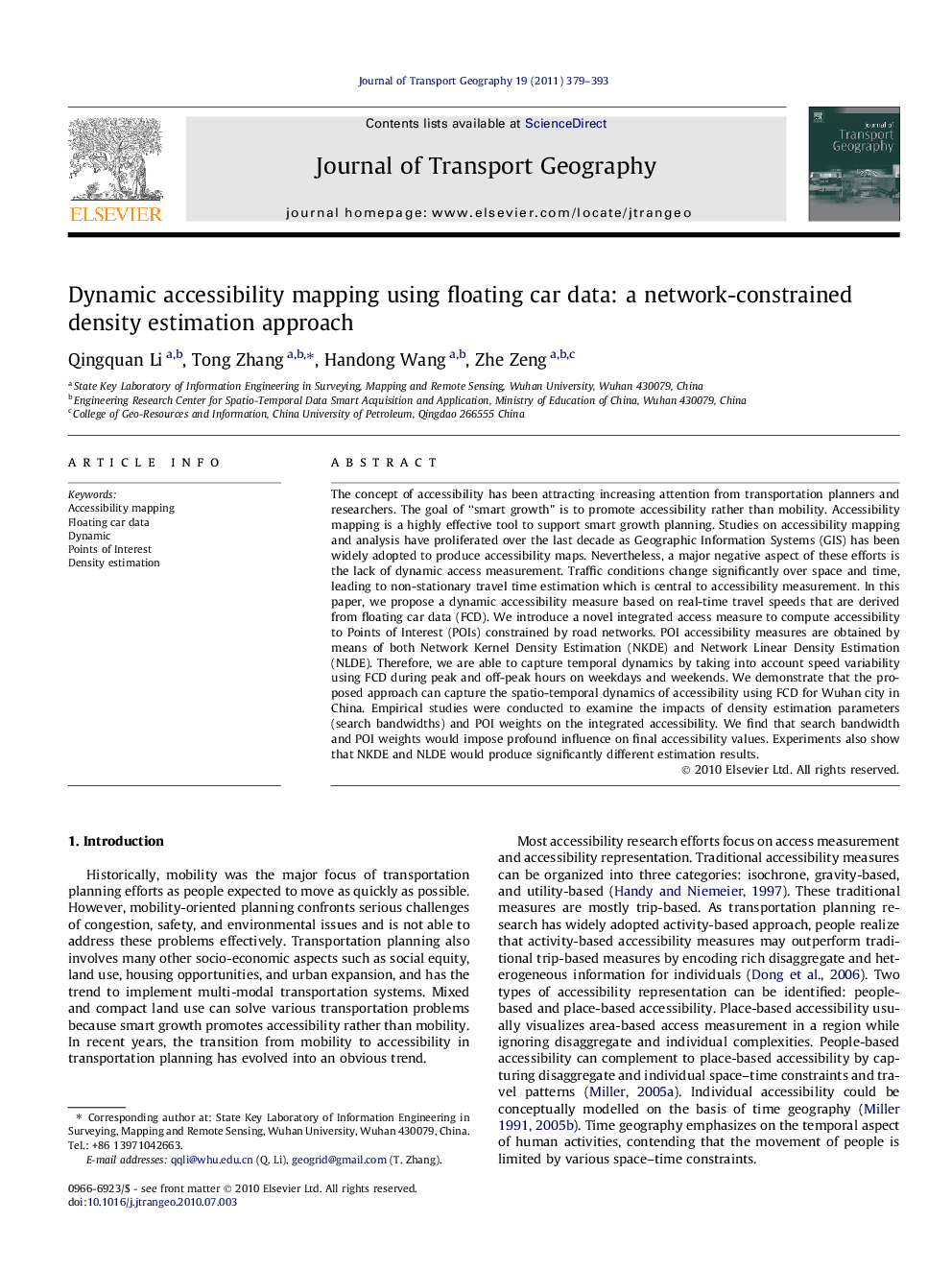| Article ID | Journal | Published Year | Pages | File Type |
|---|---|---|---|---|
| 1059684 | Journal of Transport Geography | 2011 | 15 Pages |
The concept of accessibility has been attracting increasing attention from transportation planners and researchers. The goal of “smart growth” is to promote accessibility rather than mobility. Accessibility mapping is a highly effective tool to support smart growth planning. Studies on accessibility mapping and analysis have proliferated over the last decade as Geographic Information Systems (GIS) has been widely adopted to produce accessibility maps. Nevertheless, a major negative aspect of these efforts is the lack of dynamic access measurement. Traffic conditions change significantly over space and time, leading to non-stationary travel time estimation which is central to accessibility measurement. In this paper, we propose a dynamic accessibility measure based on real-time travel speeds that are derived from floating car data (FCD). We introduce a novel integrated access measure to compute accessibility to Points of Interest (POIs) constrained by road networks. POI accessibility measures are obtained by means of both Network Kernel Density Estimation (NKDE) and Network Linear Density Estimation (NLDE). Therefore, we are able to capture temporal dynamics by taking into account speed variability using FCD during peak and off-peak hours on weekdays and weekends. We demonstrate that the proposed approach can capture the spatio-temporal dynamics of accessibility using FCD for Wuhan city in China. Empirical studies were conducted to examine the impacts of density estimation parameters (search bandwidths) and POI weights on the integrated accessibility. We find that search bandwidth and POI weights would impose profound influence on final accessibility values. Experiments also show that NKDE and NLDE would produce significantly different estimation results.
Research highlights► A novel time-varying transportation accessibility measure that models spatio-temporal dynamics. ► To demonstrate the applicability of the proposed measure with a complicated city road network. ► Comprehensive evaluation of the proposed measure (e.g. the effects of parameters).
